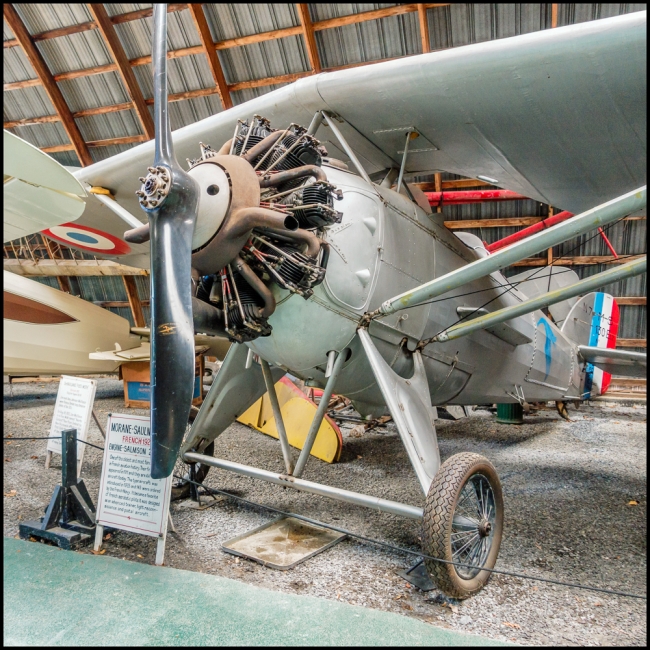According to the Military History Encyclopedia on the Web:
The Morane-Saulnier M.S.130 was a parasol wing trainer that saw most use with the French navy. It was developed from the M.S.53, itself an improved version of the M.S.50. The M.S.50 was similar to the M.S.35, a training aircraft originally developed in 1915. This first aircraft had a straight parasol wing. The M.S.50 had a straight wing with an improved aerodynamic profile and round tips. The M.S.53 of 1924 had a sweptback parasol wing, described by Morane-Saulnier as being ‘autostable’. It was followed in 1925 by the M.S.129, which had a more powerful 180hp Hispano-Suiza engine.
The M.S. 130 appeared in 1926. It had a sweptback ‘autostable’ parasol wing, a carefully contoured fuselage (built around a rectangular frame that was faired out to produce the curved shape), and a yet more powerful engine, using an uncowled 230hp Salmson 9Ab radial. The M.S.50. M.S.53 and M.S.129 had sold in small numbers, but the M.S.130 was rather more successful. A total of 145 aircraft were built, with most going to the French navy, where they were used at naval air training centres from 1927 until 1935. The French military aviation service ordered a small batch, fifteen were sold to Brazil, two to Belgium, and the type also sold to China, Guatemala and Turkey.
A number of variants were produced, mostly by fitting an alternative engine to the basic design (see list below and separate articles). The second M.S.130 was given a modified undercarriage in 1929 (as later used on the M.S.230) and entered in the 1929 Coupe Michelin air race. Two further M.S.130s were later converted to the M.S.230 standard.
Taken with a Sony RX100 M3.

